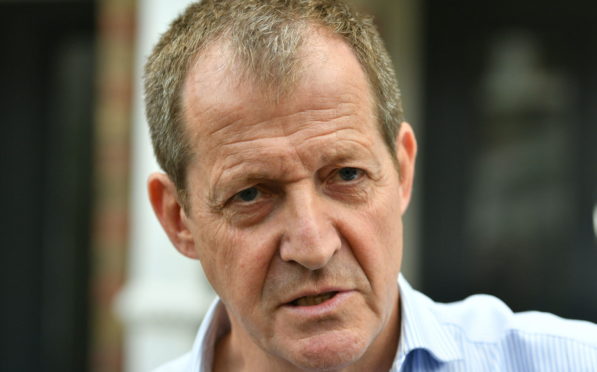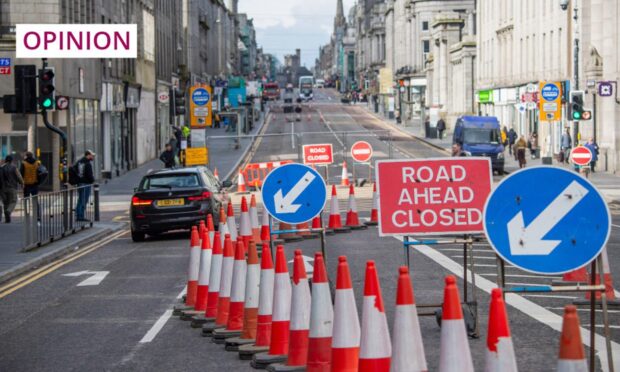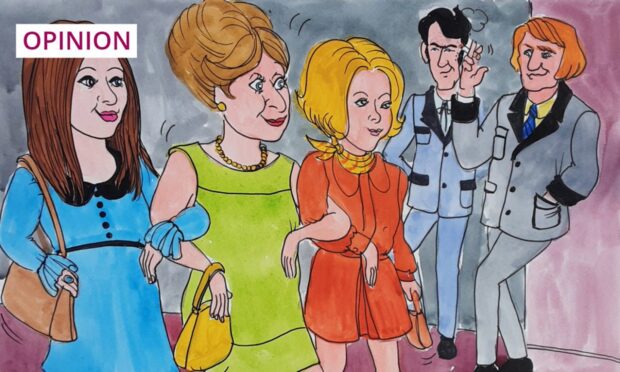Women, say recent studies, are more likely than men to become depressed during lockdown. Apparently, they worry more, drink more and eat more junk food.
Who says that equals depression? Just because we are slumped in a corner with a glass of vino and three left-over Easter eggs doesn’t mean we aren’t enjoying ourselves.
The findings are quite ironic. About 70% of those taken into intensive care with coronavirus are male. How come women are more depressed when men are more likely to die?
Women cry, men die. I would have put that the other way round – men die, women cry – but it might have suggested some kind of cause and effect which, according to one psychologist I spoke to, is not necessarily the case.
“He’s gone,” a female patient told him triumphantly, speaking of her husband. “Dead?” he asked, taken aback. “No, he left me – and I feel fabulous.”
Mental Health Awareness week ended a fortnight ago. Why deliberately wait until it’s over to write about depression? Because right now, mental health is an ongoing issue and useful as campaigns are, awareness-raising doesn’t end after seven days. It is the start, not the end, of the journey. A puppy is not just for Christmas, we don’t only love our mothers one day a year – and good mental health is not a seven day, creation-of-the-universe process.
Nor is it, as we sometimes mistakenly think, a recipe for feeling good all the time; a panacea of happiness that leaves us in a Julie Andrews bubble of raindrops on roses and whiskers on kittens. Many of us are challenged right now but good mental health is not the ability to be permanently happy. It’s the ability to deal with unhappiness and challenges – and even the depression that being alive and human occasionally brings – in a resilient, balanced way.
Does it trivialise psychological difficulties, or encourage addiction, to joke about marital difficulties, or over-indulgence in wine and chocolate? Or does it put psychological difficulty into perspective – an expected, but temporary, part of life that we learn to manage rather than obliterate?
The late American comedian Joan Rivers once spoke to me in an interview about her reputation for outrageousness. She joked about everything, she said, because it sucked the power out of difficulty and gave it to her. It put tragedy in its box.
It was a striking feature of interviewing comedians that in person they were rarely like their funny, high-energy stage personas. Mostly, they were deeply serious and introspective. Their introspection sharpened the observation that informed their performances. So what are you going to do if you don’t laugh at life. Cry?
In a recent documentary, Tony Blair’s old media manager Alastair Campbell, who has suffered from depression for most of his life, interviewed a geneticist. For the purposes of the programme, Campbell had looked into various research programmes, from the use of magic mushrooms to interrupt negative thought processes to experimental head vibration treatments. But it was the simple metaphor the geneticist used that struck him.
Think of a jar, she suggested. In that jar were all the different components affecting our mental health – genetics, personal experiences, environmental factors. We can’t make the jar smaller, but we can raise the height of it with things that make us feel good – spending time with family and friends, pursuing hobbies and a healthy approach to diet, exercise and sleep.
When Campbell listed the things that created space in his jar he realised everything he had written down concerned people, lifestyle and creativity, rather than “scientific” solutions such as medication.
One of the themes emphasised for good mental health is kindness. There is no doubt that helping someone else, focusing on their needs, forces us out of the vortex of our own particular difficulties into someone else’s frame of reference. It makes us, as well as them, feel good.
What the jam jar model reminds us, though, is that we need to be kind to ourselves as well as others.
Perhaps that includes at least attempting to think outside the box, to resist being limited by conformity or constrained by convention, because that’s when life’s possibilities open up.
I smiled recently while reading the story of a young, unknown Czech painter who was baffled when her paintings were stolen from a museum. After all, she wasn’t Picasso. And they were 6ft by 4ft so you could hardly walk out with them tucked under your arm.
When she met the thief at court, he was a heavily tattooed ex-con. Instead of shunning him, she asked to get to know him for two reasons.
Firstly, she wanted to paint him. Secondly, she wanted to know why he had stolen them. They were beautiful, he said eventually.
Perhaps theft is taking self-kindness too far. But the artist’s kind response, her curiosity about life, her ability to do the unexpected, struck me as something that would extend her mental health jar quite considerably.
An extension that I suspect limits her need for a glass of vino and three left-over Easter eggs.











